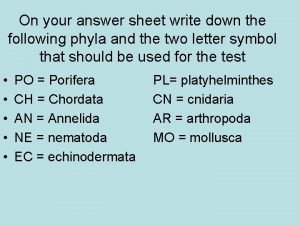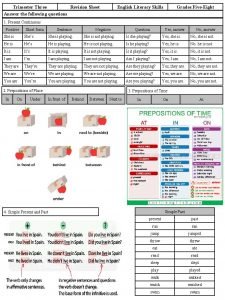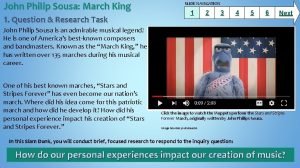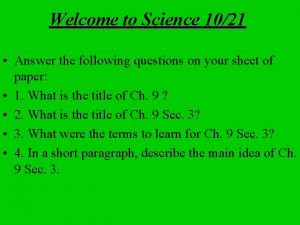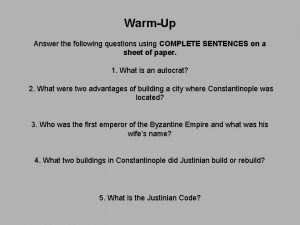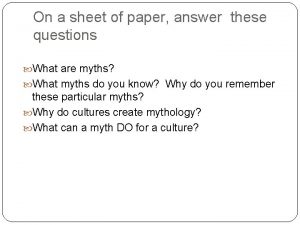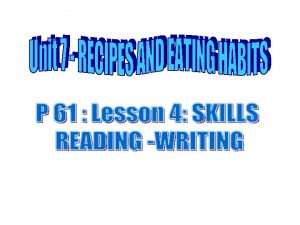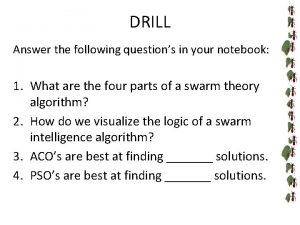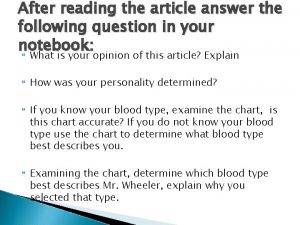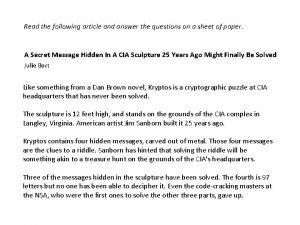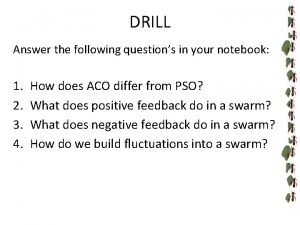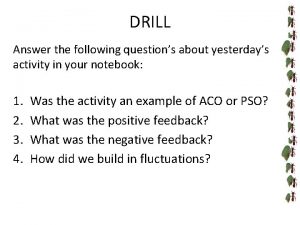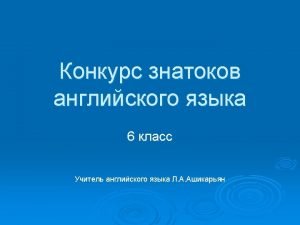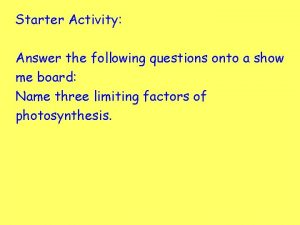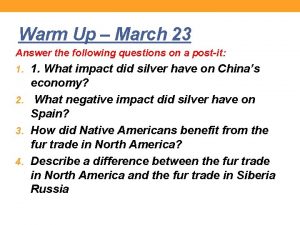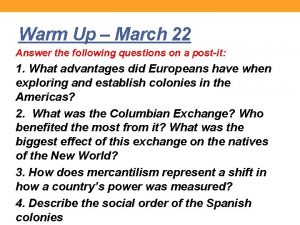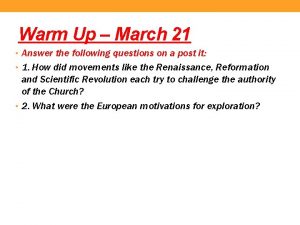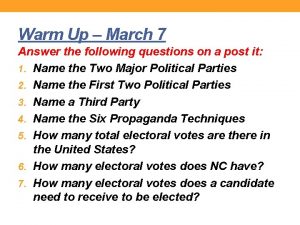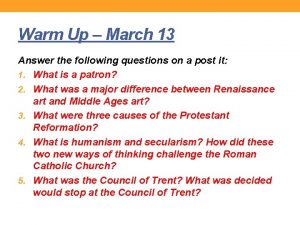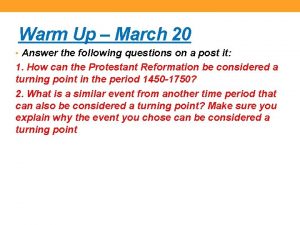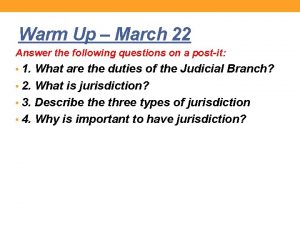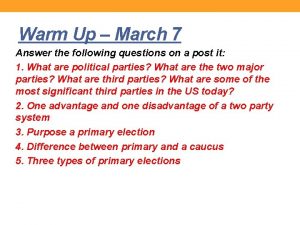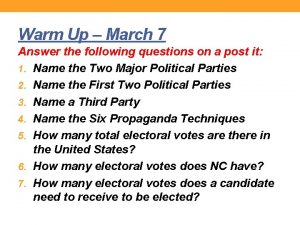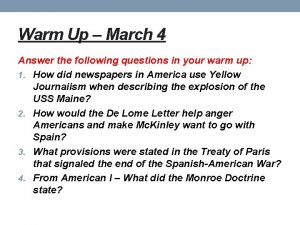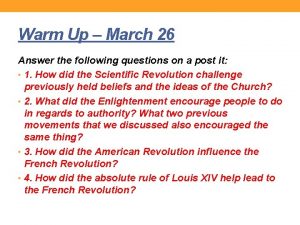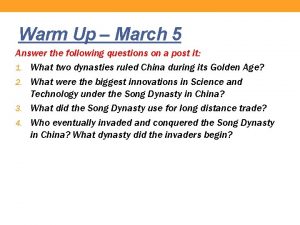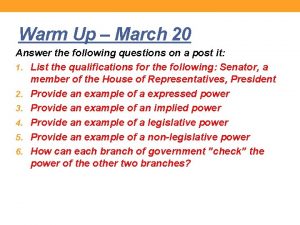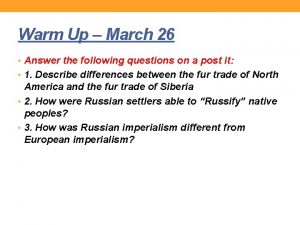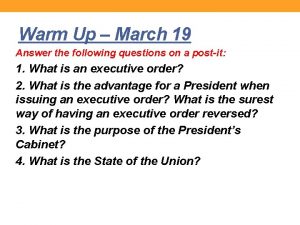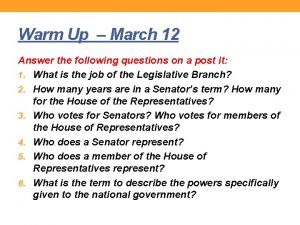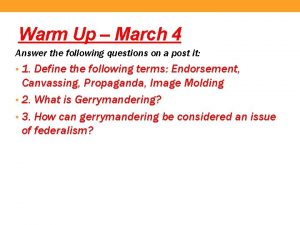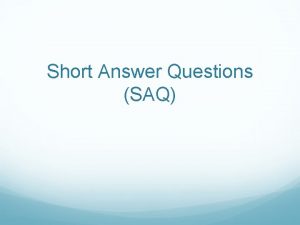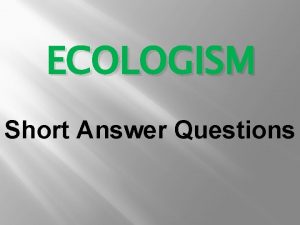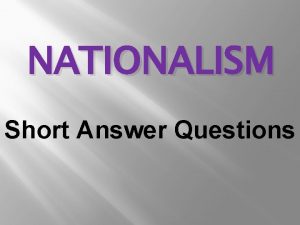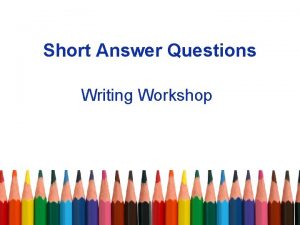Warm Up March 19 Answer the following questions























- Slides: 23

Warm Up – March 19 • Answer the following questions on a post it: • 1. Describes the influences of the Renaissance. What new style developed during the Renaissance. • 2. How was Renaissance art different than Medevil art • 3. Describe the significance of Martin Luther • 4. What were Martin Luther’s criticisms of the Roman Catholic Church?

PERIOD 4: 1450 -1750 (GLOBAL INTERACTIONS) The Protestant Reformation and the Catholic Counter-Reformation

The Protestant Reformation • Started in 1517 by a German priest named Martin Luther • Issued a document called the 95 Theses • Nailed it to a church door in Wittenberg, Germany • Outlined his issues with the Catholic Church

The Protestant Reformation • Martin Luther was critical of the following abuses conducted by the Catholic Church: • Selling church positions The selling of indulgences Pope Leo X (above) sold church positions and indulgences to raise money to rebuild St. Peter’s Basilica in Rome • Selling indulgences = certificates issued by the church that reduced or canceled punishment for a person’s sins people would buy them to ensure going to Heaven • Luxurious life of the popes • Corruption and immorality of some clergy

Martin Luther’s Beliefs • Salvation = came through faith alone; God’s grace is freely and directly granted to believers • Source of religious authority = the Bible (as interpreted by the individual), not the Pope or church leaders • These ideas = created a massive rift between Catholic and Protestant Christianity

Spread of Protestantism • Reformation thinking spread quickly within and beyond Germany thanks to the invention of the printing press by Johannes Gutenberg • Luther’s 95 Theses, many pamphlets, and his German translation of the New Testament were soon widely available • As the movement spread to the rest of Europe, it splintered, creating a variety of different Protestant churches • Ex: Lutheran, Calvinist, Anglican, Quaker, Anabaptist, Puritan, etc.

Spread of Protestantism

Calvinism • Established by John Calvin in Switzerland • Preached predestination = God determines the fate of every person

The Church of England • King Henry VIII (ruled from 1509 -1547) wanted a divorce from his first wife (Catherine of Aragon) • She had 6 children -- only 1 survived (a girl named Mary) • King wanted a male heir to the throne • King thought Catherine of Aragon was too old and he wanted to marry the young, beautiful Anne Boleyn instead • Problem = the Pope refused to grant the King a divorce

The Church of England • Result = Henry VIII separated England from the Pope and the Catholic Church • Made himself head of the new “Church of England” • Kept Catholic practices & traditions, but denied authority of the Pope • Had supporters of the old religion killed

The Church of England • King Henry VIII had the Church of England end his marriage with Catherine & he married Anne Boleyn • Anne bore him a daughter = Elizabeth I • Henry VIII married 4 more times after this & only got 1 son = Edward VI (got the throne, but died in his teens)

The Church of England • Henry’s daughter Mary tried to restore Catholicism when she became Queen • Burned hundreds of Protestants at the stake • Nicknamed “Bloody Mary”

Anglicanism • Mary’s sister Elizabeth I became Queen when Mary died blended features of the Church of England Catholicism • Religion called Anglicanism • Pleased most people • Radical Protestants called “Puritans” wanted to purify the English Church of all its Catholic elements ended up leaving for North America where they could have more religious freedom

Religious Conflicts • 1562 – 1598 = violent conflict between Catholics and Protestants in France French Protestants = called Huguenots = the minority • In one day (in 1572) = about 3, 000 Huguenots were massacred by Catholic mobs • 1598 = King Henry IV issued the Edict of Nantes • Granted religious toleration to French Protestants • Idea = soon they’d return to the Catholic Church Massacre of the Huguenots, 1572

Religious Conflicts • Thirty Years’ War (1618 -1648) = war between Catholics and Protestants • Started in Holy Roman Empire; soon took over most of Europe • Destructive war • 15 -30% of German population died from violence, famine, or disease • 1648 = Peace of Westphalia signed • Redrew some European political Painting of the Beginning of the 30 Years’ War boundaries • Said each state was independent and could control its own religious affairs

Catholic Counter-Reformation • Pope Paul III wanted to reform the Catholic Church to win back followers and stop the growth of Protestant faiths • Council of Trent (1545 -1563) 1) 2) 3) Reaffirmed Catholic teachings and practices Put an end to Church abuses, such as the selling of indulgences and church positions Put emphasis on creating a better-educated clergy

Long Essay Question (LEQ) • Option 1: periods 1 -2 • Option 2: periods 3 -4 • Option 3: periods 5 -6 • 40 minutes

Long Essay Question (LEQ) • 1 st Paragraph - Introduction – • Thesis – address the question and state your argument (1 sentence) THEN in your next sentence state 2 - 3 pieces of evidence that you will use to support your argument • Context – same as DBQ (2 -3 sentences) • 2 nd Paragraph – go into detail about the first piece of evidence – give specific examples to support your argument • 3 rd Paragraph - go into detail about the first piece of evidence – give specific examples to support your argument • Conclusion – Compare OR Contrast to a similar historical event

Long Essay Practice Question • Continuity and Change over Time (CCOT) – one of your reasons needs to be an example to show something did not change, and one example needs to show a change • Causation (Cause and Effect) – One example needs to be a cause of the event in the question, one needs to be an effect of the event in the question • Comparison – Both examples need to be comparing the events in the question

Evaluate the extent to which the Crusades represented a turning point in Europe during the Middle Ages • Thesis - The Crusades represented a turning point in the Middle Ages as it brought back trade to Western Europe and also represented the start of a period where cultures began to interact. • Context – Feudalism, a government based on trading land for loyalty, represented the political structure of the Middle Ages. People lived and worked on a manor, rarely interacting with different people. The Crusades, holy wars fought between Christians and Muslims over the holy land of Jerusalem, helped to end this isolation and represented a return to trading and cultural interaction.

Evaluate the extent to which the Crusades represented a turning point in Europe during the Middle Ages • 2 nd Paragraph – go into detail about how the Crusades brought back trade to Western Europe – give 2 examples to support • 3 rd Paragraph – go into detail about how the Crusades brought back the interaction between different cultures – give 2 examples to support. • 4 th Paragraph – Conclusion – Connect the Crusades being a turning point to a similar event that occurred at any point in history – Ex. The Protestant Reformation as a turning point in 1450 -1750

Long Essay Question Practice • Evaluate the extent to which the Protestant Reformation represented a turning point in Europe during the period 1450 -1750

TOD – March 16 • Answer the following questions on a post – it: • 1. Describe the significance of Martin Luther • 2. What practices of the church was Martin Luther critical of? • 3. How do Calvinists differ from Martin Luther in regards to how an individual achieves salvation?
 Anthem of poland
Anthem of poland Answer the following question in your answer sheet
Answer the following question in your answer sheet Trimester fill in worksheet answers
Trimester fill in worksheet answers Philip
Philip Answer the following questions science
Answer the following questions science Answer the following questions in complete sentences.
Answer the following questions in complete sentences. Use the graph below to answer the following questions.
Use the graph below to answer the following questions. Write your thoughts and questions on a sheet of paper
Write your thoughts and questions on a sheet of paper Look at the film stills and discuss the questions
Look at the film stills and discuss the questions 24 in pairs answer the questions
24 in pairs answer the questions Answer the following questions in your notebook.
Answer the following questions in your notebook. Do the following in your notebook.
Do the following in your notebook. B answer the following questions
B answer the following questions After reading the article answer the following question
After reading the article answer the following question Activity 5 work in pairs answer the questions
Activity 5 work in pairs answer the questions C) answer the following questions on your notebook
C) answer the following questions on your notebook Read the article and then answer the questions that follow
Read the article and then answer the questions that follow Look at the picture and answer the questions below
Look at the picture and answer the questions below Answer the question in your notebook
Answer the question in your notebook Activity 11 answer the following questions
Activity 11 answer the following questions In your notebook answer the following
In your notebook answer the following Watch the video and answer the question
Watch the video and answer the question Task 1 answer the following questions
Task 1 answer the following questions Activity answer the following questions
Activity answer the following questions

